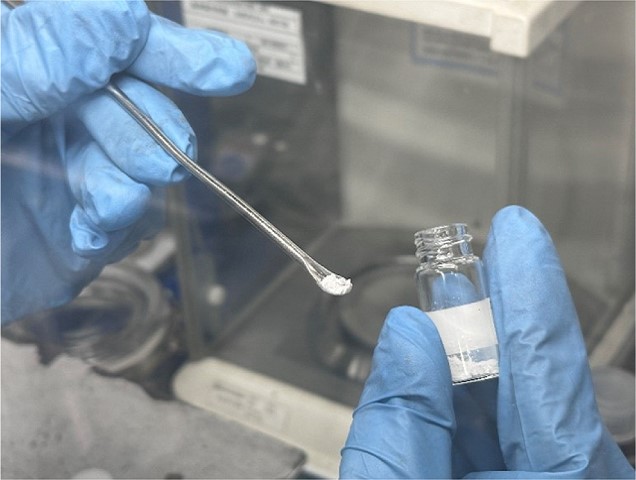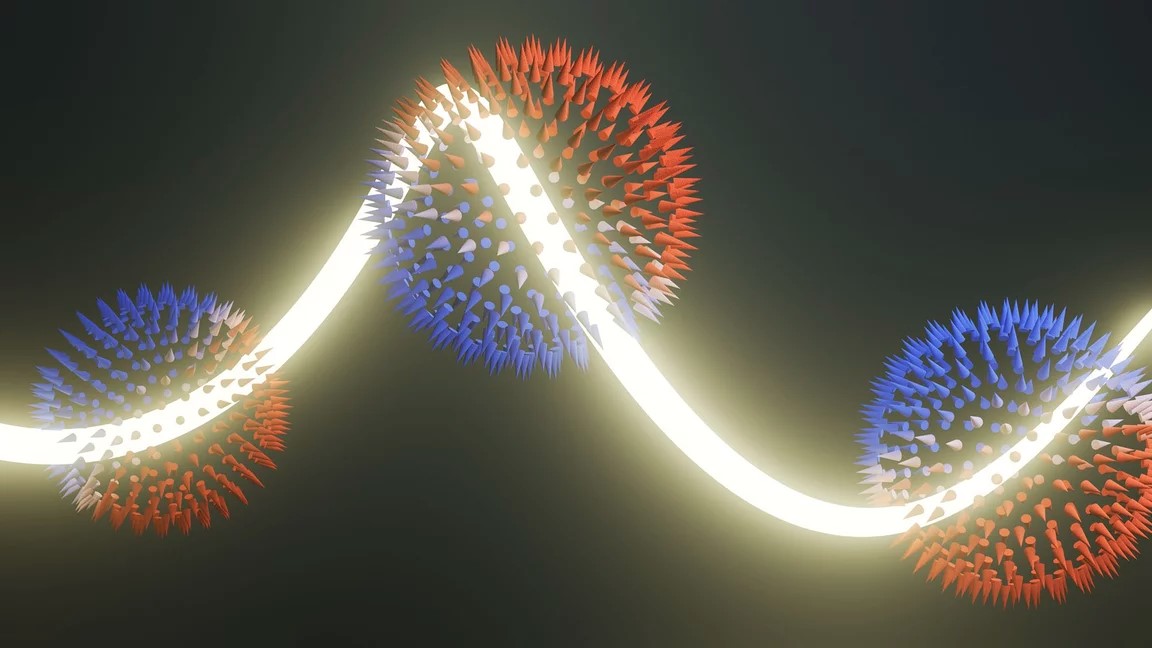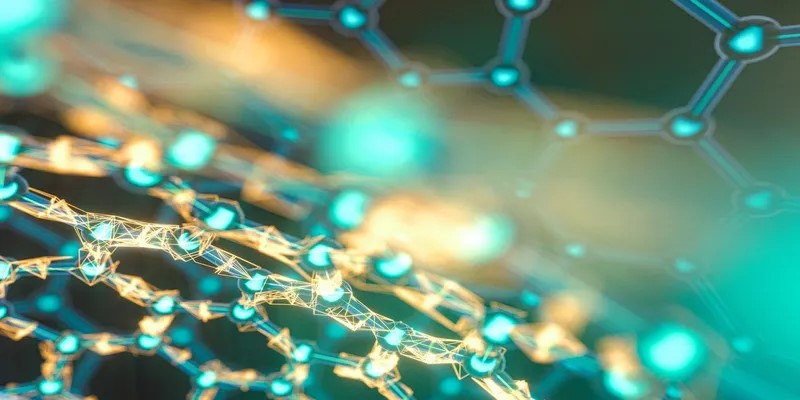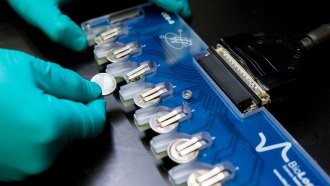Stanford Scientists Unlock the Secrets of Next-Generation Soft Electronics Using Advanced Microscopy
Organic mixed ionic-electronic conductors (OMIECs) are emerging as a promising class of materials for next-gen batteries and electronic devices due to their flexibility and impressive electrochemical properties. However, the molecular microstructure of these soft polymer semiconductors, and how electrons move through them, remains poorly understood. Stanford materials scientists have now used a cutting-edge microscopy technique to bridge this gap.

Figure 1. Map of Polymer Chains. (Credit: Salleo Research Group)
In their latest breakthrough, researchers employed Cryo 4D-STEM, a special electron microscopy technique designed for delicate, “beam-sensitive” materials like biomolecules, to visualize the inner workings of OMIECs. This powerful tool allows the scientists to study these polymers without damaging their soft structure. By observing OMIEC polymers soaked in an electrolyte while charged, the team uncovered new insights into how these materials maintain their electronic properties even as they expand up to 300%. Figure 1 shows map of polymer chains.
“When OMIEC polymers are immersed in liquid electrolyte, they swell, like an accordion, yet maintain electronic functionality," said Alberto Salleo, a senior author on the study published in Nature Materials. The polymer’s long molecular chains stretch and gently curve, forming a continuous path around bubbles of electrolyte, ensuring stable performance [2].
This visualization represents a significant step forward. "Where previously we could only theorize, now we can see what is happening that makes the OMIECs work so well,” said Yael Tsarfati, first author and postdoctoral scholar. The research offers crucial structural insights, opening doors to better material design for future electronics.
The study reveals that OMIECs, despite being soft and malleable, maintain structural integrity when charged, thanks to their liquid crystal-like polymer structure. The polymers bend and stretch while forming a gel-like structure, ensuring that their electronic functionality remains intact, even under the stress of swelling. Tsarfati highlighted the resilience of the material, noting its ability to handle physical changes and ion exchange with minimal strain – a highly desirable quality for electronics.
Led by Stanford’s Salleo lab, this work represents a collaborative effort with Lawrence Berkeley National Laboratory, UC Berkeley, SLAC National Accelerator Laboratory, and the University of Oxford. Supported by the U.S. Department of Energy, the National Science Foundation, and the Toyota Research Institute, this study brings researchers closer to designing OMIECs for real-world applications [1].
With the help of Stanford’s cutting-edge facilities and advanced imaging techniques, the team is now poised to explore new directions in material science, potentially revolutionizing the future of flexible electronics.
Source: Stanford University
References:
- https://www.technologynetworks.com/applied-sciences/news/researchers-illuminate-the-inner-workings-of-new-age-soft-semiconductors-391613
- https://www.eurekalert.org/news-releases/1059944
Cite this article:
Hana M (2024), Stanford Scientists Unlock the Secrets of Next-Generation Soft Electronics Using Advanced Microscopy, AnaTechMaz, pp. 62















